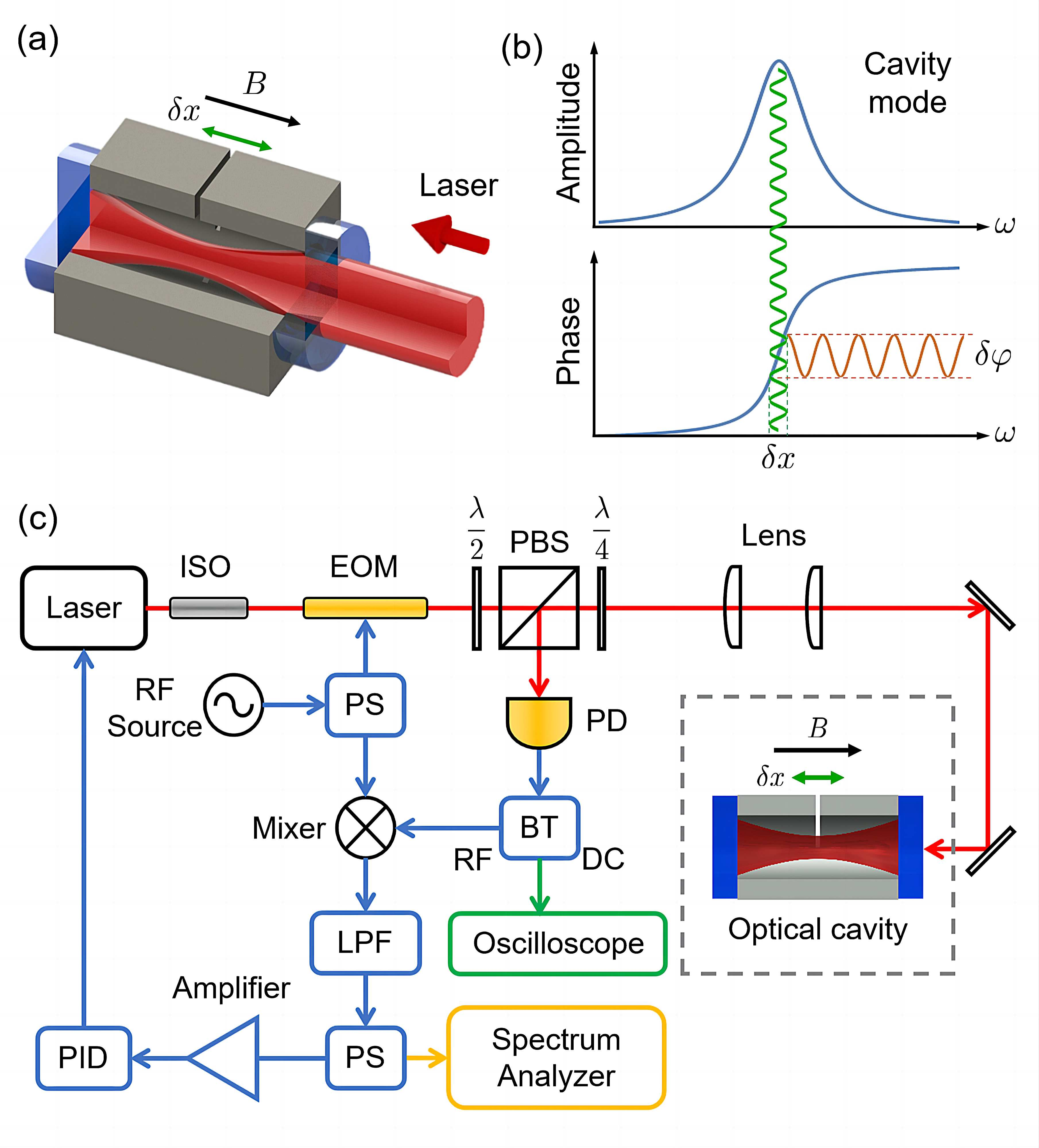Recently, the research group led by Prof. Yong-Chun Liu from the Department of Physics at Tsinghua University has made progress in the research of high-precision magnetic field measurement. They have developed a highly sensitive magnetometer based on the magnetostrictive Fabry-Pérot cavity optomechanical system, achieving a magnetic sensitivity of sub-picotesla level, capable of operating at room temperature and in the Earth's magnetic field environment. The research findings were published in Physical Review Letters under the title "Subpicotesla Optomechanical Magnetometry."
High-sensitivity magnetic field measurement technology is not only of great significance in basic physics research but also has a broad range of application prospects in national defense security, resource exploration, space exploration, industrial inspection, medical diagnosis, and other fields. Currently, although there are various types of magnetic field measurement methods, achieving high sensitivity, room temperature operation, and operation in the Earth's magnetic field environment simultaneously remains a significant challenge.
This research work proposed a highly sensitive magnetic field measurement method based on the magnetostrictive Fabry-Pérot cavity optomechanical system. By designing a magnetostrictive cavity optomechanical system that supports the swinging mechanical mode with a gap, and combining the characteristics of optical resonance and mechanical resonance enhancement, a sensitive response to the magnetic field was achieved, with a magnetic sensitivity of 620 fT/Hz1/2. This is the most sensitive cavity optomechanical magnetometer in the world, and the system has the advantage of being able to operate at room temperature and in the Earth's magnetic field environment. Currently, the system sensitivity is still limited by the electronic noise, while the sensitivity limit limited by the system's thermal noise is 5.9 fT/Hz1/2. With further optimization, the system sensitivity is expected to reach this thermal noise limit.

Fig. 1: Schematic diagram of the magnetostrictive Fabry-Pérot cavity optomechanical system and the experimental optical layout.
The magnetostrictive Fabry-Pérot cavity optomechanical system designed in this work is shown in Fig. 1. The system uses a magnetostrictive material alloy (Terfenol-D) as the main part of the optical cavity, with a high reflectivity concave-convex mirror on each side of the cavity, forming a high-finesse Fabry-Pérot optical cavity. If the external magnetic field changes, the magnetostrictive effect will cause the length of the optical cavity to change, which in turn causes the resonance frequency of the optical cavity to change. By using the Pound-Drever-Hall (PDH) frequency locking technique, the laser output frequency is locked to the resonance frequency of the optical cavity, and the change in resonance frequency can be measured through the PDH error signal. To achieve a sensitive response to the magnetic field, a special gap design is used in the structure of the optical cavity, introducing a "gap- swinging mechanical mode". This mechanical mode has the advantages of low resonance frequency and high quality factor, which can greatly enhance the resonance response to the magnetic field (Fig. 2).

Fig. 2 Noise power spectral density, system response, and magnetometer sensitivity measurement results.
This achievement provides an important method for high-sensitivity magnetic field measurement under room temperature conditions and in the Earth's magnetic field environment, showing broad application prospects in the fields of national defense security and resource exploration.
The corresponding author of the paper is Associate Professor Yong-Chun Liu from the Department of Physics at Tsinghua University. The co-first authors of the paper are Dr. An-Ning Xu (now a postdoctoral researcher at Shandong University), Dr. Yifan Li (now a postdoctoral researcher at École Normale Supérieure in Paris, France), Dr. Xianliang Li (now an assistant professor at the Beijing Academy of Quantum Information Sciences). The paper also includes contributions from Associate Professor Bei Liu at Shandong University. Professor Li You from the Department of Physics at Tsinghua University provided careful guidance on this work. The research was supported by the National Key R&D Program for Young Scientists of the Ministry of Science and Technology, the general project of the National Natural Science Foundation, the Key-Area Research and Development Program of Guangdong Province, the State Key Laboratory of Low-Dimensional Quantum Physics at Tsinghua University, and the Frontier Science Center for Quantum Information.
Article link: https://link.aps.org/doi/10.1103/PhysRevLett.133.153601